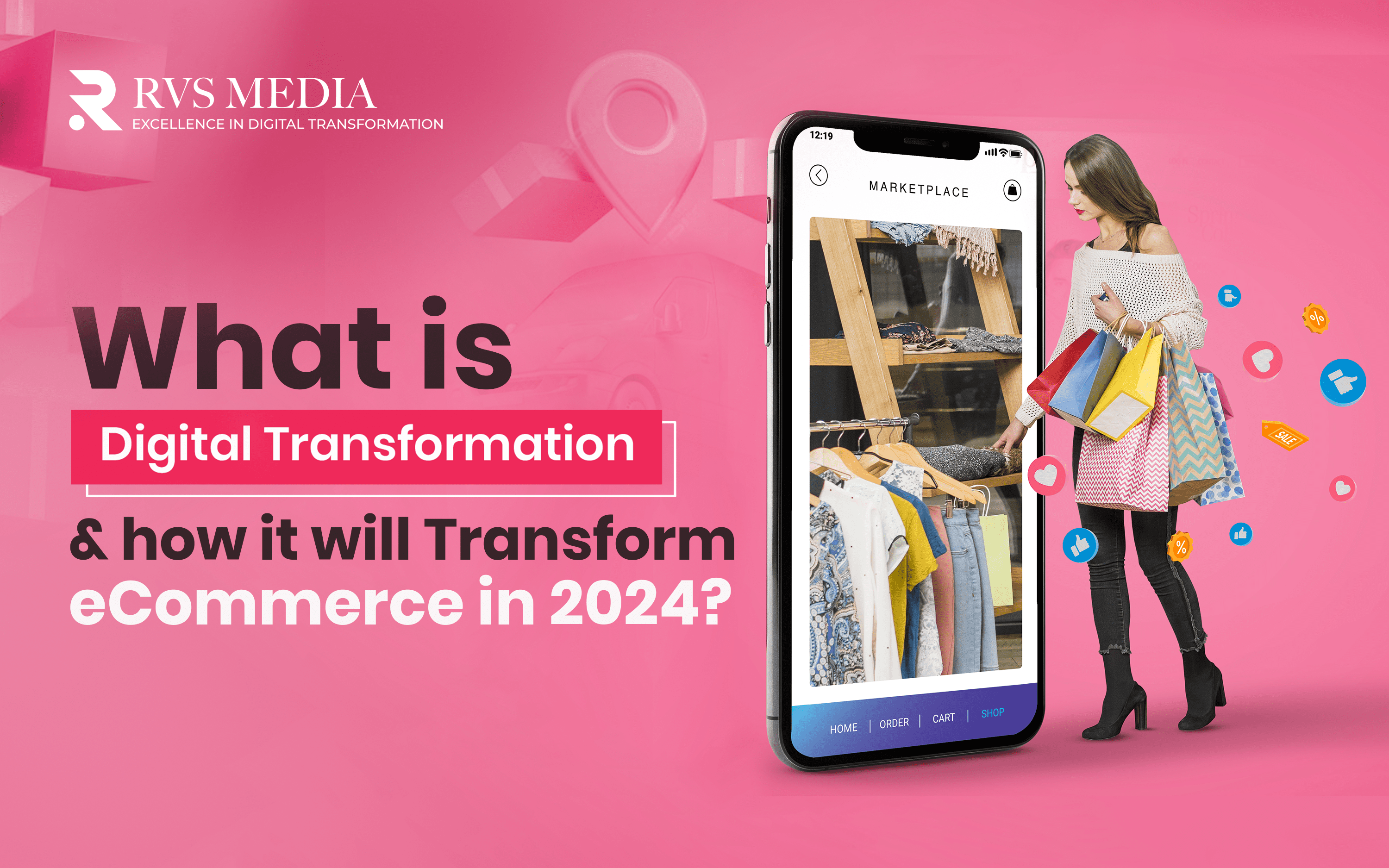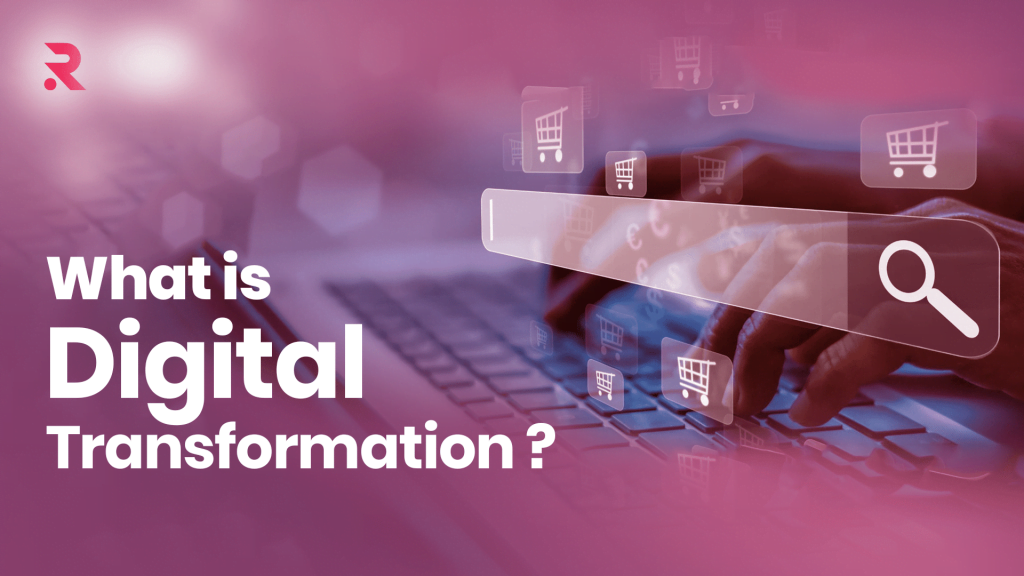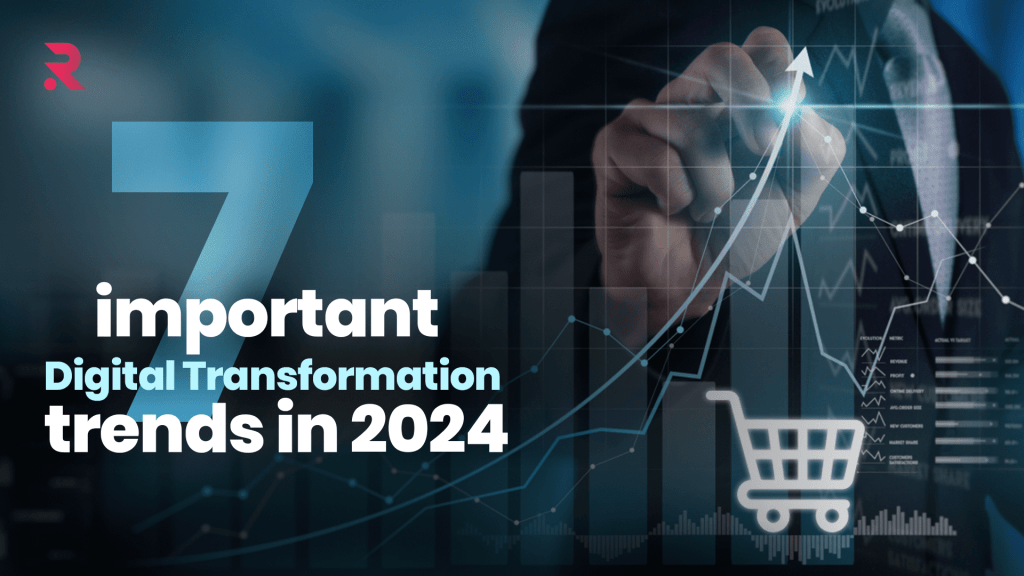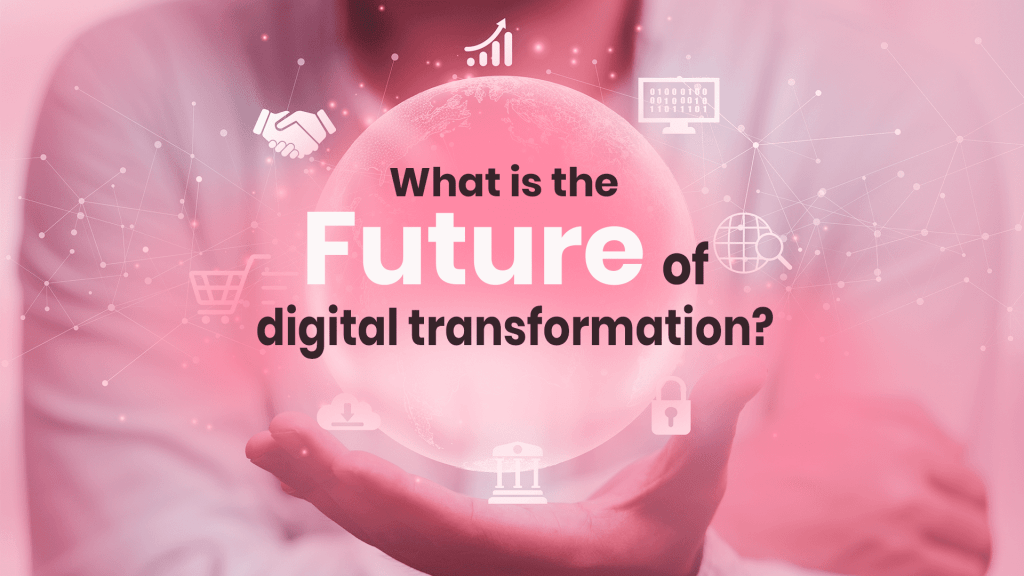What is Digital Transformation and how it will Transform eCommerce in 2024?
- Feb 8, 2024
- By Tarun

Introduction
In the bustling world of online commerce, a revolution is brewing. With each passing day, businesses are racing to keep pace with the ever-changing demands of consumers and the relentless march of technology. It’s against this backdrop that the concept of digital transformation emerges—a powerful force reshaping the landscape of eCommerce as we know it. So, join me on a journey as we unravel the essence of digital transformation, uncover its impact on eCommerce, and unveil the trends that are set to redefine the industry in 2024.
What is Digital Transformation?

Picture a bustling marketplace where traditional methods of doing business collide with cutting-edge technology. This fusion is what we call digital transformation—an exciting journey that revolutionizes every facet of a business, from its core operations to the way it interacts with customers. At its essence, digital transformation is about harnessing the power of digital technology to reimagine business processes and deliver unparalleled value to customers.
Now, let’s take a closer look at the ingredients that make up this transformative recipe. Think of data analytics as the chef’s secret sauce, providing valuable insights into customer preferences and market trends. Artificial intelligence acts as the master chef, infusing operations with intelligence and efficiency. Cloud computing serves as the kitchen, providing a flexible and scalable infrastructure for digital operations. And automation? Well, that’s like having a team of tireless sous chefs, streamlining tasks and freeing up valuable time for innovation and creativity.
In essence, digital transformation isn’t just about adopting new tools—it’s about embracing a whole new way of doing business, one that’s agile, customer-centric, and constantly evolving to meet the demands of the digital age.
Why is it Happening?
In the ever-changing landscape of commerce, digital transformation isn’t just a buzzword—it’s a necessity driven by a confluence of factors that are reshaping the way businesses operate and engage with their customers.
Let us walk you through some of them!
1. Evolving Consumer Expectations:
- Modern consumers demand seamless, personalized, and convenient shopping experiences.
- Customization is key, with consumers expecting businesses to anticipate their needs.
2. Technological Advancements:
- Breakthroughs in technology, including artificial intelligence and cloud computing, empower businesses to innovate.
- These advancements provide tools to streamline operations and improve efficiency.
3. Competitive Landscape:
- Adapting to digital transformation is essential for businesses to remain relevant and competitive.
- Staying ahead of the curve is crucial in a world of constant digital disruption.
Industries Changing by Digital Transformation:
- Retail and eCommerce: Transforming consumer experiences by redefining how they browse, buy, and receive goods. Companies like Amazon and Ocado are pioneers in revolutionizing online shopping with seamless interfaces, personalized recommendations, and efficient delivery options.
- Healthcare: Elevating patient care through the adoption of telemedicine, digital health records, and remote monitoring technologies. Leading agencies like Babylon Health and Cerner Corporation are at the forefront of providing accessible virtual consultations, electronic health records, and remote health monitoring solutions.
- Finance: Revolutionizing banking and financial services through online platforms, digital payment solutions, and blockchain technology. Companies like Monzo and Barclays are driving innovation in the finance sector by offering user-friendly digital banking services, secure digital payment options, and exploring the potential of blockchain for enhanced security and transparency.
- Manufacturing: Optimizing production processes with the integration of Internet of Things (IoT), automation, and predictive maintenance systems. Agencies such as Siemens and Rolls-Royce are leveraging IoT sensors, automated robotics, and predictive analytics to enhance manufacturing efficiency, minimize downtime, and ensure predictive maintenance for machinery and equipment.
7 Important Digital Transformation Trends in 2024:

Let’s take a journey into the future of eCommerce and explore the seven game-changing trends that are set to redefine the way we shop in 2024:
- Step into immersive worlds where you can try on clothes, visualize furniture in your home, or even test drive products—all from the comfort of your living room.
- Say goodbye to typing and hello to seamless shopping with virtual assistants like Alexa and Google Assistant, making it easier than ever to find products and place orders using just your voice.
- Get ready for a shopping experience tailored to your unique preferences, with predictive analytics anticipating your needs and suggesting products you’ll love.
- As environmental consciousness grows, expect to see eCommerce platforms embracing sustainability with eco-friendly packaging and ethically sourced products.
- Blockchain technology is revolutionizing supply chain management, ensuring transparency and authenticity by providing tamper-proof records of product sourcing and distribution.
- Social media platforms are becoming the new shopping destinations, with features like Instagram Shopping and TikTok’s “Shop Now” making it easier than ever to discover and purchase products while scrolling through your feeds.
- With smartphones becoming ubiquitous, mobile commerce continues to dominate the eCommerce landscape, offering convenience and accessibility for shoppers on the go.
These seven trends are poised to shape the future of eCommerce in 2024, offering exciting new possibilities for consumers and businesses alike.
Benefits of Digital Transformation:
Let’s break down the benefits of digital transformation in simple terms that anyone can understand:
- Better Customer Experience: Imagine getting personalized recommendations, easily finding what you need, and being able to shop from anywhere. That’s what digital transformation does—it makes your shopping experience more personalized, convenient, and accessible.
- Smoother Operations: Think of digital transformation as having a helpful assistant who takes care of repetitive tasks and helps you make smarter decisions. It automates tasks, uses data to guide decisions, and makes everything run more smoothly.
- Easy Growth and Flexibility: With digital transformation, it’s like having a superpower that helps you quickly adapt to changes and seize new opportunities. It makes your business agile, so you can respond fast to what’s happening in the market.
- Beating the Competition: In today’s fast-paced world, staying ahead means being quick on your feet. Digital transformation gives you an edge by helping you stay ahead of the competition and stand out in a crowded market.
In simple terms, digital transformation is like giving your business a magic wand that makes everything easier, smoother, and more competitive.
What’s the Future of Digital Transformation?

Let’s gaze into the crystal ball and glimpse the exciting future of digital transformation:
Embracing Innovation: Picture a world where businesses are constantly evolving and embracing the latest technologies. It’s like a never-ending journey of discovery, where new ideas and trends are always around the corner, keeping things fresh and exciting.
Harnessing the Power of AI and Machine Learning: Imagine having a virtual assistant that not only helps with tasks but also learns and improves over time. That’s the magic of AI and machine learning—they drive automation and provide valuable insights that help businesses work smarter, not harder.
Protecting Privacy and Security: In a world where data is king, trust and security are paramount. Businesses are doubling down on efforts to safeguard consumer data and ensure compliance with regulations. It’s all about building trust and maintaining the integrity of customer relationships.
Building Collaborative Ecosystems: Collaboration is the name of the game in the future of digital transformation. Businesses are forging partnerships with tech companies and startups to create vibrant ecosystems where ideas flow freely, innovation thrives, and everyone benefits from mutual growth.
In the ever-evolving world of digital transformation, the future is bright and full of possibilities. It’s a world where innovation reigns supreme, AI and machine learning drive automation and insights, privacy and security are non-negotiable, and collaboration is key to unlocking new opportunities for growth.
Conclusion:
In the dynamic world of eCommerce, RVS Media stands out as your ultimate partner for digital transformation. Whether it’s website building, software development, or digital marketing, we’re committed to redefining customer experiences, optimizing operations, and driving sustainable growth for your business in 2024 and beyond. With our expertise, innovation, and results-driven approach, choose RVS Media to unlock the full potential of your online business today!
FAQs About Digital Transformation:
- What are the main challenges of digital transformation?
Challenges include resistance to change, integration with legacy systems, cybersecurity risks, and skill gaps. - How long does digital transformation take?
The duration varies, typically spanning months to several years depending on factors like organization size and readiness. - What role does leadership play in driving digital transformation initiatives?
Leadership sets vision, allocates resources, leads change management, and fosters innovation to drive successful digital transformation. - How can businesses measure the success of their digital transformation efforts?
Success can be measured through metrics like customer satisfaction, operational efficiency, revenue growth, employee engagement, and digital adoption rates.
 Shopify
Shopify

















